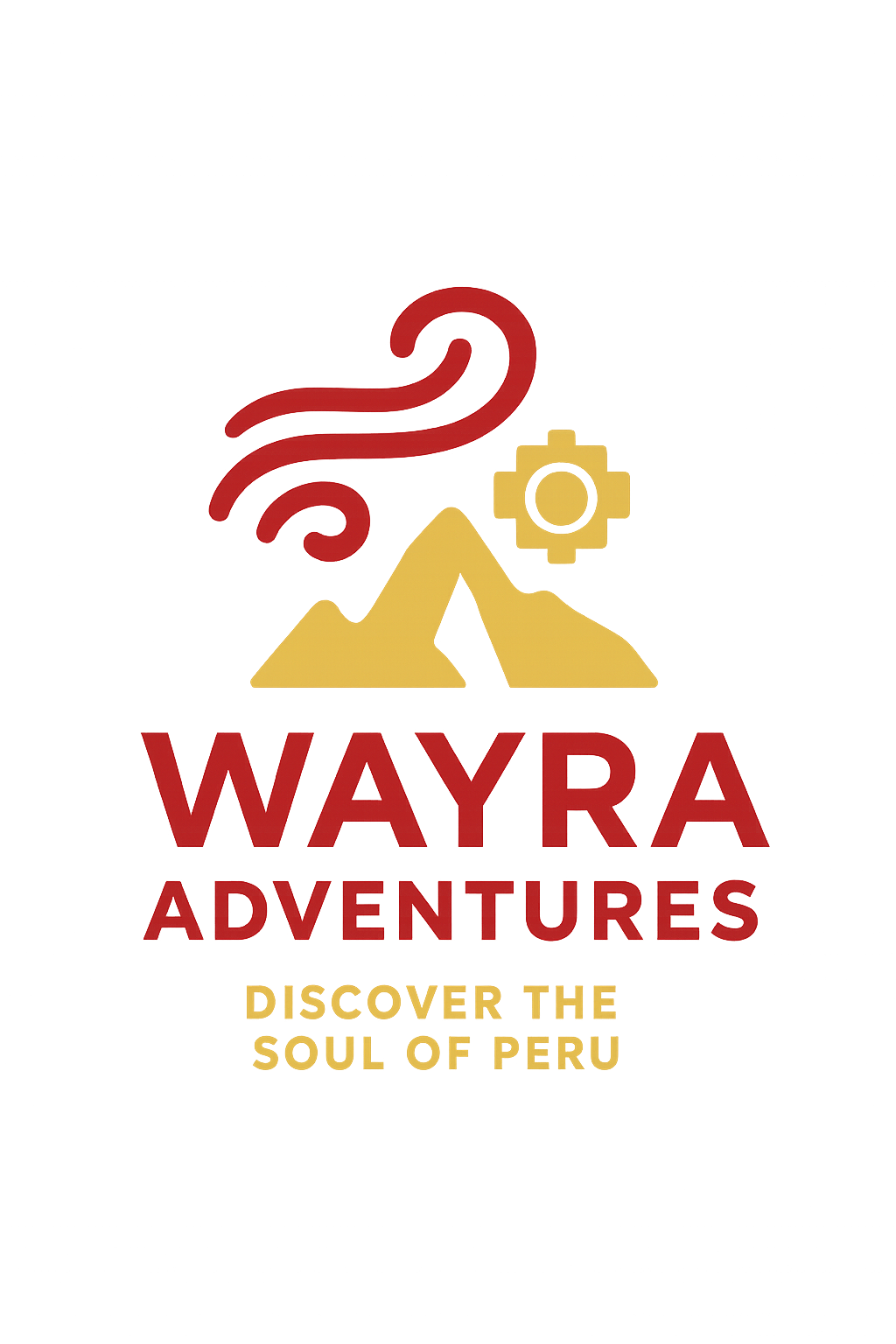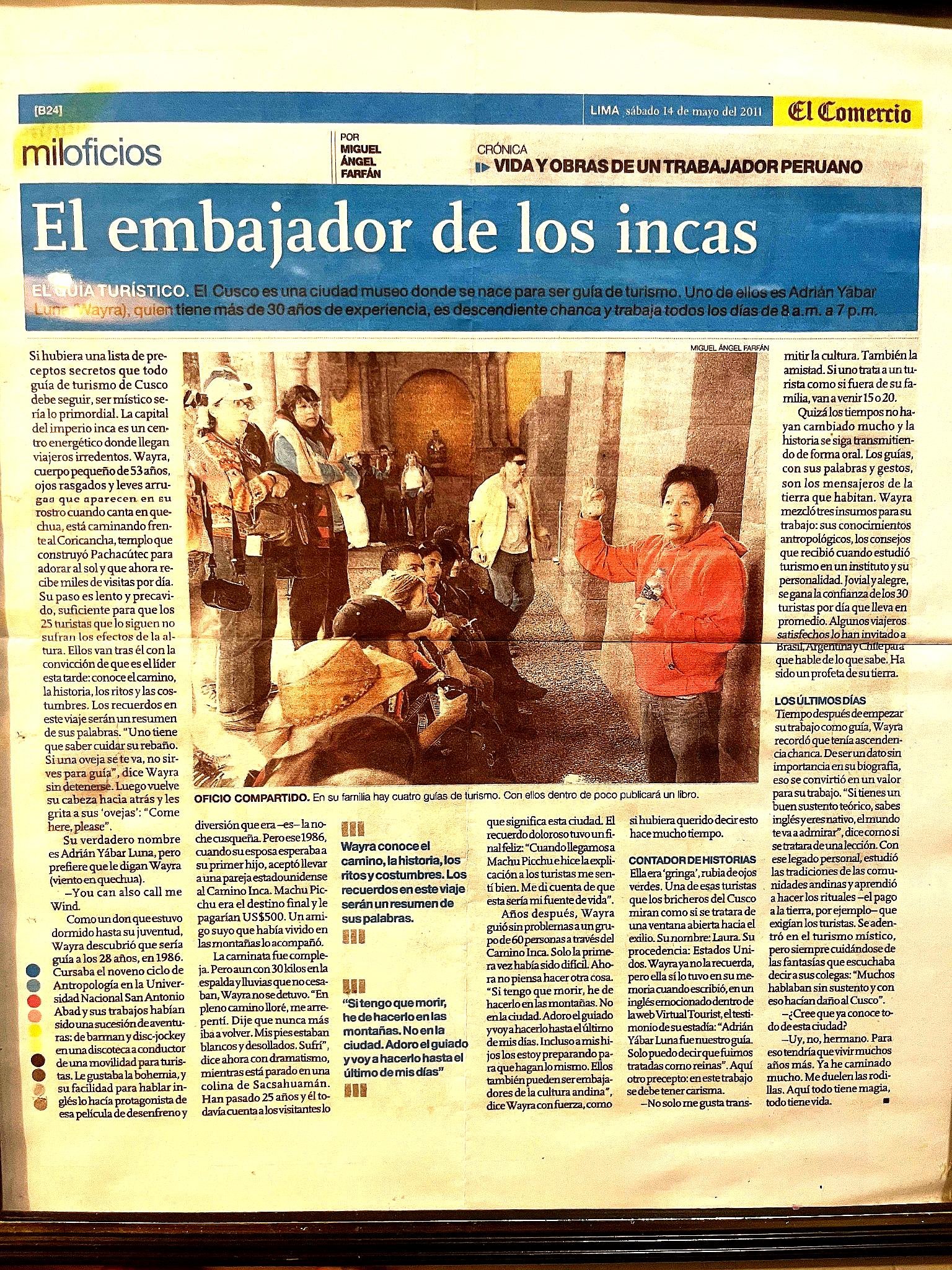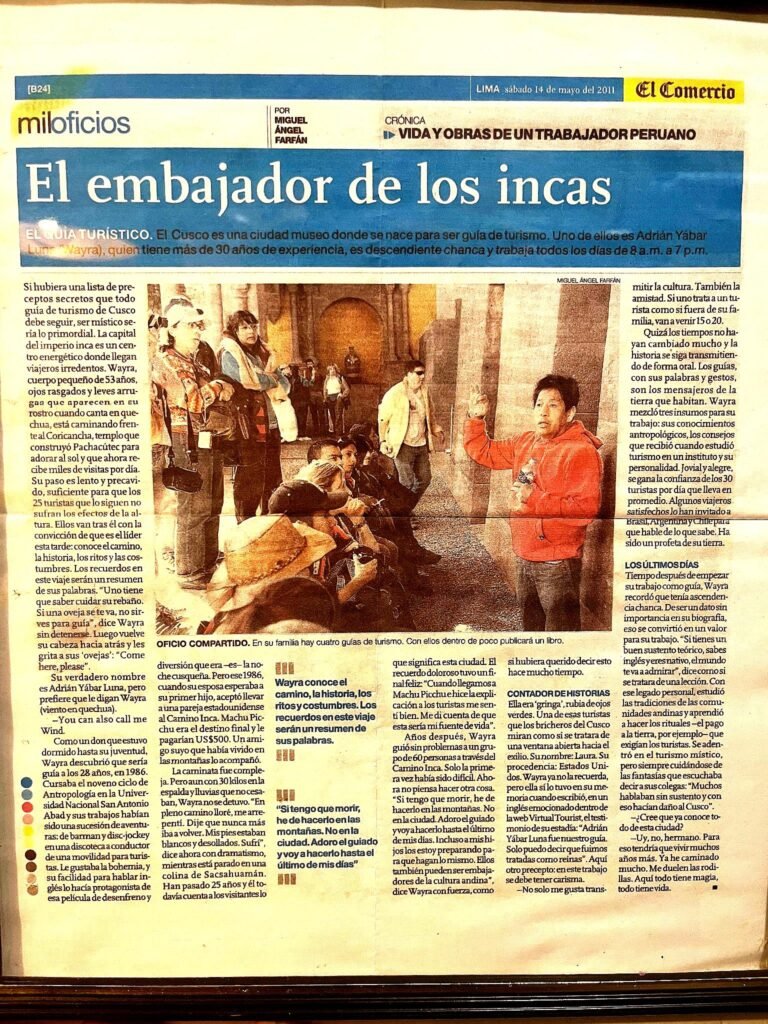INTRODUCTION
If there were a list of secret precepts that every Cusco tour guide must follow, being mystical would be the most important. The capital of the Inca Empire is an energetic center that attracts tireless travelers. Wayra, a small-framed man with slanted eyes and light wrinkles that appear on his face when he sings in Quechua, walks in front of the Qorikancha, the temple built by Pachacútec to worship the sun, and which now receives thousands of visitors daily. His pace is slow and cautious, just enough so that the 25 tourists following him don’t suffer the effects of the altitude. They walk behind him, convinced that this leader knows the path, the history, the rituals, and the traditions. The memories of this trip will be condensed in his words. “One must be mystical to be a guide,” Wayra says as he pauses, lifts his head, raises his voice, and calls out to his “sheep”: “Come here, please.” His real name is Adrián Yabar Luna, but he prefers to be called Wayra (wind, in Quechua). – “You can also call me Wind,” he adds with a smile. Like a gift that remained hidden until his youth, Wayra discovered his calling at the age of 28, in 1986. His first experience was guiding an American couple on the Inca Trail to Machu Picchu. The hike was exhausting, filled with hunger and cold, but it earned him 500 U.S. dollars and a lifelong purpose. In his family, four members are tour guides. In Peru, there are around 30,000, most concentrated in Cusco. Wayra distinguishes himself by his style: his tours last 8 to 10 hours, and he usually earns about 250 soles per day.
Shared Profession
Wayra knows the path, the history, the rituals, and the customs. The memories of this trip will be summarized in his words. “If I must die, I want it to be in the mountains. Not in the city. I love the countryside, and here is where I want to remain until my last days. ”Times have changed, and history has become his tool of work. Tour guides, with their words and gestures, are the messengers of what once existed. For Wayra, his historical knowledge, his Quechua songs, and his charisma have become a bridge between tourists and the land of the Incas. “To transmit culture. Also, friendship. If you treat a tourist as if they were family, they will come back,” he explains.
Storyteller
This great guide, son of the Andes, says tourists look for three things: to see, to learn, and to feel moved. People want to open their hearts; they open to the sky, to the Pachamama, to the Apus,” Wayra explains. That is why his stories are filled with pauses moments of silence that let his words settle into the visitor’s spirit. Among his favorite places to guide are Machu Picchu, Ollantaytambo, Sacsayhuamán, the Sacred Valley, and the Inca Trail. His work has also taken him beyond Peru, guiding tourists in Bolivia, Brazil, Argentina, and Chile. “I like talking about what I know. It has been a gift from the land,” he says.
The Final Days
Wayra wakes up early every morning, grabs his guide’s bag, and sets off on another journey. For him, Cusco is not just a city it is a living museum.Each street he walks is a new lesson, another chapter in the story of his ancestors. And yet, after more than three decades of guiding, he admits that he has still not discovered it all. “There are always corners, details, and stories that surprise me. You never finish knowing Cusco completely,” he says with a smile.He is proud of his Chanka heritage, and with more than three decades of experience, he feels a deep responsibility to pass down that legacy. Guiding has become not just a job, but a way of life. He works from 8 a.m. to 7 p.m., day after day, leading groups of visitors who, through him, touch the spirit of the Andes.
“If I must die, I want it to be in the mountains. Not in the city. I love the countryside, and here is where I want to remain until my last days.”






